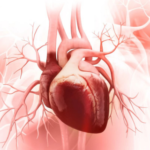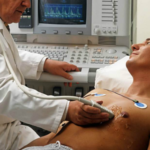
In the realm of cardiovascular medicine, diagnostic tools play a pivotal role in unraveling the complexities of heart health. Among these tools, echocardiography emerges as a cornerstone, providing clinicians with a dynamic and detailed view of the heart’s structure and function. In this comprehensive exploration, we delve into the critical role of echocardiography in cardiovascular diagnosis, shedding light on its applications, advantages, and contributions to patient care.
Understanding Echocardiography:
Echocardiography is a non-invasive imaging technique that utilizes sound waves (ultrasound) to create detailed images of the heart. It allows healthcare providers to visualize the heart’s chambers, valves, and major blood vessels in real-time. This imaging modality provides crucial information about the heart’s structure, function, and blood flow, enabling accurate diagnosis and guiding appropriate interventions.
- Types of Echocardiography:
- Transthoracic Echocardiography (TTE): This is the most common type of echocardiography, involving the placement of a transducer on the chest to obtain images of the heart through the chest wall.
- Transesophageal Echocardiography (TEE): In this procedure, a specialized transducer is passed through the esophagus to obtain images of the heart from a closer and clearer perspective.
- Stress Echocardiography: This involves performing echocardiography before and after exercise or administration of a medication to evaluate the heart’s response to stress.
- Doppler Echocardiography: This technique measures the speed and direction of blood flow within the heart and blood vessels, providing valuable information about the heart’s hemodynamics.
- Applications of Echocardiography:
- Assessment of Heart Function: Echocardiography allows clinicians to evaluate the pumping function of the heart, known as the ejection fraction. This is crucial in diagnosing conditions such as heart failure and cardiomyopathies.
- Valvular Heart Disease Evaluation: Echocardiography provides detailed images of heart valves, enabling the assessment of their structure and function. It is invaluable in diagnosing and monitoring conditions such as valve stenosis or regurgitation.
- Detection of Cardiac Abnormalities: Echocardiography helps identify structural abnormalities such as congenital heart defects, tumors, or blood clots within the heart chambers.
- Diagnosis of Cardiac Conditions: Echocardiography plays a central role in diagnosing various cardiac conditions, including coronary artery disease, pericardial diseases, and infectious or inflammatory disorders of the heart.
- Guidance for Interventions: Echocardiography is used to guide certain cardiac interventions, such as percutaneous valve replacements or repairs, by providing real-time imaging during procedures.
- Advantages of Echocardiography:
- Non-Invasiveness: Echocardiography is a non-invasive imaging technique, eliminating the need for surgical procedures to visualize the heart.
- Real-Time Imaging: Echocardiography provides real-time images, allowing clinicians to observe the heart’s structures and functions as they happen.
- No Radiation Exposure: Unlike some imaging modalities, echocardiography does not involve radiation, making it safer for repeated use, especially in certain populations.
- Highly Versatile: Echocardiography is versatile and can be used in various clinical settings, including outpatient clinics, emergency departments, and critical care units.
The Significance of Echocardiography in Cardiovascular Diagnosis:
- Assessment of Heart Function: Echocardiography is pivotal in assessing the heart’s function, including the ejection fraction – a measure of the heart’s pumping efficiency. This information is crucial in diagnosing and managing conditions such as heart failure, where impaired pump function is a hallmark.
- Visualization of Heart Valves: The detailed imaging provided by echocardiography allows for a thorough examination of heart valves. Clinicians can assess the structure, movement, and integrity of valves, facilitating the diagnosis and management of valvular heart diseases, such as mitral valve prolapse or aortic stenosis.
- Identification of Structural Abnormalities: Echocardiography enables the identification of structural abnormalities within the heart chambers, walls, and septum. Congenital heart defects, tumors, and abnormalities in the heart’s architecture can be accurately diagnosed and evaluated using this imaging modality.
- Diagnosis of Coronary Artery Disease: While echocardiography is not the primary modality for diagnosing coronary artery disease, it can provide valuable information about the heart’s response to decreased blood flow. Stress echocardiography, for example, can reveal abnormal wall motion indicative of ischemia during exercise or pharmacological stress.
- Monitoring of Cardiac Conditions: Echocardiography is instrumental in monitoring the progression of various cardiac conditions over time. It aids in tracking changes in heart function, valve status, and overall cardiac health, guiding adjustments to treatment plans as needed.
- Guidance for Interventions: Echocardiography is often used to guide cardiac interventions, particularly those involving the repair or replacement of heart valves. Real-time imaging allows clinicians to visualize the procedure and ensure optimal placement and function of prosthetic valves.
- Risk Stratification: Echocardiography plays a role in risk stratification for certain cardiac conditions. For example, in hypertrophic cardiomyopathy, it helps assess the thickness of the heart muscle and identify individuals at higher risk of complications such as arrhythmias.
Incorporating Echocardiography into Cardiovascular Care:
- Routine Screening and Diagnostic Evaluation: Echocardiography is routinely employed for diagnostic evaluations, helping clinicians assess patients with symptoms such as chest pain, shortness of breath, or palpitations. It aids in distinguishing between various cardiac conditions and guides further management.
- Preoperative Assessment: Echocardiography is a valuable tool in preoperative assessments, especially for individuals undergoing cardiac or high-risk surgeries. It helps evaluate baseline cardiac function, identify any structural abnormalities, and assess the overall risk profile for surgery.
- Heart Failure Management: In the management of heart failure, echocardiography is indispensable. It helps clinicians determine the underlying cause of heart failure, assess the severity of impairment, and guide the selection of appropriate medications and interventions.
- Valvular Heart Disease Interventions: Echocardiography is integral to the planning and guidance of interventions for valvular heart diseases. Whether it’s a transcatheter aortic valve replacement (TAVR) or mitral valve repair, real-time imaging ensures precision and optimal outcomes.
- Postoperative Monitoring: After cardiac surgeries or interventions, echocardiography is used for postoperative monitoring. It helps assess the success of the procedure, identify any complications, and guide ongoing management for optimal recovery.
The Future of Echocardiography: Advances and Innovations:
The field of echocardiography continues to evolve, with ongoing advancements and innovations enhancing its diagnostic capabilities. Some notable trends and developments include:
- Three-Dimensional Echocardiography: Three-dimensional echocardiography provides a more comprehensive and detailed view of the heart’s structures. This technology is particularly beneficial in the assessment of complex cardiac anatomy and for guiding interventions.
- Strain Imaging: Strain imaging allows for the assessment of myocardial deformation, providing insights into the heart’s contractile function. It is a sensitive tool for detecting subtle changes in cardiac mechanics, aiding in the early detection of myocardial dysfunction.
- Artificial Intelligence Integration: The integration of artificial intelligence (AI) in echocardiography holds promise for improving diagnostic accuracy and efficiency. AI algorithms can assist in automated image analysis, pattern recognition, and decision support, streamlining the interpretation process.
- Handheld and Portable Devices: Advances in technology have led to the development of handheld and portable echocardiography devices. These compact devices offer the flexibility to perform echocardiograms at the point of care, enhancing accessibility and expanding the reach of cardiovascular diagnostics.
- Contrast-Enhanced Echocardiography: Contrast agents, which enhance the visibility of blood flow and cardiac structures, are increasingly being used in echocardiography. This improves the imaging quality, especially in challenging cases, and enhances the ability to detect subtle abnormalities.
Cardium’s Role in Advancing Echocardiography:
Under the leadership of Dr. Rahul Gupta, Cardium (https://www.cardium.in/) stands at the forefront of advancing echocardiography for the benefit of cardiovascular health. The institution’s commitment to excellence, technological innovation, and patient-centered care align with the evolving landscape of cardiac diagnostics.
- State-of-the-Art Technology: Cardium invests in state-of-the-art echocardiography technology, ensuring that patients receive the highest quality imaging for accurate diagnoses. The use of advanced equipment enhances the precision of cardiac evaluations and contributes to better patient outcomes.
- Expert Interpreters and Clinical Team: Dr. Rahul Gupta leads a team of expert interpreters and clinicians at Cardium, ensuring that echocardiographic findings are meticulously analyzed and interpreted. The combination of clinical expertise and cutting-edge technology enhances the diagnostic accuracy of echocardiography reports.
- Comprehensive Cardiovascular Care: Cardium’s commitment to comprehensive cardiovascular care extends beyond diagnostics to encompass personalized treatment plans, lifestyle interventions, and ongoing monitoring. This holistic approach ensures that patients receive integrated care tailored to their unique needs.
Conclusion:
Echocardiography, with its ability to provide detailed, real-time images of the heart, plays a crucial role in the diagnosis and management of various cardiovascular conditions. From assessing heart function and detecting valvular abnormalities to guiding interventions and monitoring postoperative recovery, echocardiography is indispensable in modern cardiovascular medicine.
Dr. Rahul Gupta’s expertise and Cardium’s commitment to excellence underscore the importance of echocardiography in advancing cardiovascular care. As technology continues to evolve and innovations shape the future of cardiac diagnostics, echocardiography remains a cornerstone in the quest for precision, efficiency, and improved outcomes in the realm of heart health. Through the collaborative efforts of skilled clinicians, technological advancements, and patient-centered care, echocardiography continues to be a powerful ally in the visualization of the heart and the promotion of cardiovascular well-being.




